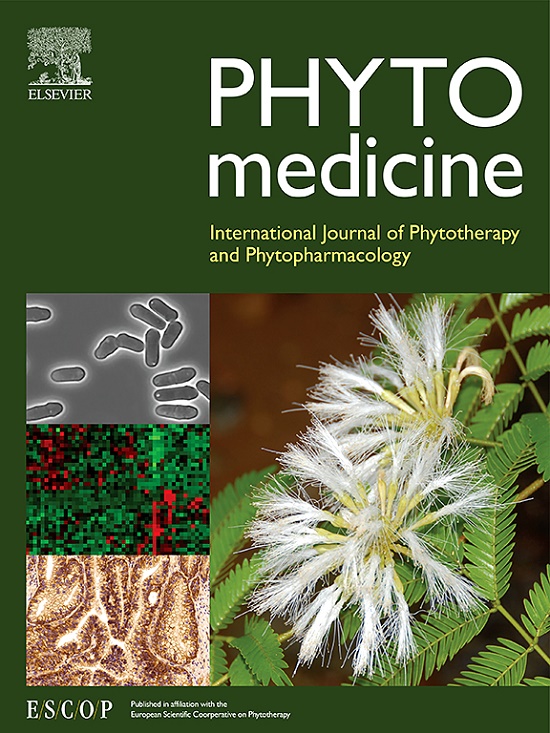The pathogenesis of hepatocellular carcinoma: ERK/ULK1/NCOA4-mediated inhibition of iron autophagy, and Epimedium extract targeted modulation of this pathway to treat hepatocellular carcinoma
IF 6.7
1区 医学
Q1 CHEMISTRY, MEDICINAL
引用次数: 0
Abstract
Background
The pathogenesis of hepatocellular carcinoma (HCC) is characterized by its complexity and diversity, involving processes such as glycolysis, autophagy, and cellular immunity. Notably, the role of ERK/ULK1/NCOA4-mediated inhibition of iron autophagy in HCC pathogenesis has not been previously reported. This study provides a novel elucidation of HCC pathogenesis and identifies the clinical adjuvant therapy drug, Epimedium, as a potential treatment based on this mechanism. The research clarifies the regulatory effects of Epimedium on the ERK/ULK1/NCOA4-mediated inhibition of iron autophagy pathway in the treatment of HCC, thereby offering a scientific foundation for clinical treatment strategies and the development of innovative drugs.
Purpose
The objective of this study is to uncover a new aspect of HCC pathogenesis, ERK/ULK1/NCOA4-mediated inhibition of iron autophagy, and to screen for clinical targeted adjuvant therapy drugs based on this mechanism.
Methods
A HCC rat model was induced with N-Nitrosodiethylamine (DEN). The physiological status of the HCC rats was assessed through indicators such as body weight and organ index. Liver damage in HCC rats was evaluated using hematoxylin and eosin (HE) staining and biochemical markers. Additionally, untargeted metabolomics was employed to explore the pathogenesis of HCC. UPLC-Q-TOF-MS combined with network pharmacology was employed to elucidate novel mechanisms, predict pathway targets, filtrate active ingredients and analyze the biological processes and signaling pathways modulated by EPME. DEN liver cancer rats were treated with different concentrations of EPME and protein expression levels were assessed by Western blot analysis. Molecular docking techniques were utilized to assess the binding affinity between the core components of EPME and target proteins. A HepG2 liver cancer in vitro model, in combination with inhibitor (SBI-0206965), was employed to verify the modulatory effects of EPME and its active ingredients on the ERK/ULK1/NCOA4 signaling pathway. Microscale thermophoretic (MST) was employed to verify the binding ability of the EPME core components to the ULK1 protein.
Results
Metabolomics combined with network pharmacology revealed a novel pathogenesis of HCC, which is ERK/ULK1/NCOA4-mediated iron autophagy inhibition. EPME can activate iron autophagy mediated by ERK/ULK1/NCOA4 through active ingredients such as icaritin, astragalin, and emodin, thereby enhancing the survival conditions of HCC-afflicted rats and mitigating liver damage and carcinogenesis, ultimately achieving therapeutic outcomes in HCC treatment.
Conclusion
The ERK/ULK1/NCOA4-mediated iron autophagy inhibition represents a novel therapeutic mechanism for HCC. The clinical adjuvant drug EPME may exert therapeutic effects on HCC by activating ERK/ULK1/NCOA4-mediated iron autophagy.

求助全文
约1分钟内获得全文
求助全文
来源期刊

Phytomedicine
医学-药学
CiteScore
10.30
自引率
5.10%
发文量
670
审稿时长
91 days
期刊介绍:
Phytomedicine is a therapy-oriented journal that publishes innovative studies on the efficacy, safety, quality, and mechanisms of action of specified plant extracts, phytopharmaceuticals, and their isolated constituents. This includes clinical, pharmacological, pharmacokinetic, and toxicological studies of herbal medicinal products, preparations, and purified compounds with defined and consistent quality, ensuring reproducible pharmacological activity. Founded in 1994, Phytomedicine aims to focus and stimulate research in this field and establish internationally accepted scientific standards for pharmacological studies, proof of clinical efficacy, and safety of phytomedicines.
 求助内容:
求助内容: 应助结果提醒方式:
应助结果提醒方式:


